What is the Difference Between Non-Profit and For-Profit Retirement Communities?
What is the Difference Between Non-Profit and For-Profit Retirement Communities?
When exploring retirement living options, one critical distinction to consider is whether a community operates as a non-profit or a for-profit organization. While both types of retirement communities may offer similar health services—such as independent living, assisted living and memory support—their operational structures, financial motivations, and decision-making processes can differ significantly. These differences can have a substantial impact on costs, care quality, and long-term sustainability.
Ownership and Accountability
Retirement communities are divided into for-profit and non-profit models, each with distinct ownership structures and accountability mechanisms. For-profit facilities are owned by private entities—such as individuals, corporations, or investment firms—whose primary objective is to generate financial returns for shareholders. This focus on profitability influences decision-making, often leading to cost-cutting measures that can affect service quality, staffing levels, and facility maintenance. While these facilities may provide high-quality care, the emphasis on profit can sometimes compromise resident satisfaction.
In contrast, non-profit communities are governed by a board of trustees or directors, typically composed of local professionals or community members. Their primary goal is to enhance residents’ well-being rather than maximize profits. Net profits are reinvested into the community to improve services, care quality, and long-term sustainability. This mission-driven approach prioritizes long-term health and well-being, often resulting in better staffing ratios, more comprehensive services and a stronger sense of community. Residents are viewed as primary beneficiaries, fostering an environment centered around care and support.
Quality of Care: The Impact of Mission and Values
The financial model and mission of a retirement community significantly influence the quality of care provided. Non-profit communities often have a mission-driven focus, emphasizing resident well-being, while for-profit facilities may adopt a more business-oriented approach.
Non-profit retirement communities tend to have missions grounded in service, compassion, and community well-being. Many non-profits are founded on principles of charity and care for others. This mission-driven approach emphasizes the residents’ needs, health, and happiness above financial gain. Non-profits often prioritize holistic care, investing in wellness programs, social activities, and resident support services, which can lead to a more nurturing and fulfilling environment.
Retirement facilities working with a primary goal of generating profit may make decisions based on cost efficiency that could change the level of care and services provided. In contrast, those with a mission-driven approach emphasize holistic care, investing in wellness programs and social activities that foster a nurturing and fulfilling environment.
The Role of Donations and Community Support
A unique aspect of non-profit retirement communities is their ability to receive donations and charitable support, which can enhance their capacity to serve residents. Many non-profits have associated foundations – similar to The Hearthstone Foundation – or fundraising programs that allow community members and families to contribute. Donations may support resident assistance funds, upgrading buildings and capital improvements to enhance the resident experience, covering unexpected or urgent community expenses and more. This charitable model allows non-profit communities to maintain a strong focus on long-term resident well-being and fosters a culture of community involvement.
Price Comparison: Are Non-Profits More Affordable?
Although pricing can vary depending on location and services offered, non-profits often provide better long-term value compared to for-profit communities. Both types of communities usually charge an entrance fee and monthly service fees to cover housing, amenities, and care services.
For-profit retirement communities may offer lower initial entry costs, but they often include additional charges for services, amenities, or levels of care that are not part of the basic package. The profit-driven model means that part of the revenue is directed to shareholders, which can reduce the amount reinvested into the community. This may lead to budget-conscious measures that affect care and services.
Non-profit retirement communities typically reinvest resident fees directly into the community, which can result in a higher standard of care and quality of living. While the upfront fees or monthly costs may be similar or even higher than for-profit counterparts, residents often benefit from more comprehensive services and fewer extra charges. The revenue is used to expand programs, maintain facilities, and improve health services, offering long-term financial stability and enhanced care.
The Hearthstone at Green Lake
As the leading non-profit continuing care retirement community (CCRC) in Seattle, The Hearthstone exemplifies the best of the non-profit model. Founded in 1966, The Hearthstone has grown to become Washington State’s top CCRC, offering a wide range of care options including assisted living and memory support.
One of the hallmarks of The Hearthstone is its reinvestment in the community. Unlike for-profit facilities that prioritize shareholder dividends, The Hearthstone reinvests net profits to enhance the lives of residents. From funding capital projects to expanding wellness programs, the community continuously evolves to meet the changing needs of its residents.
The Hearthstone’s location in the historic Green Lake neighborhood further sets it apart. Residents enjoy the natural beauty of the lake, the nearby retail area, and the proximity to renowned medical care. The community’s three-building campus offers independent living options as well as access to a full range of health services.

Read our guide to Seattle retirement living on The Hearthstone campus to familiarize yourself with our CCRC and the Green Lake neighborhood.
Making the Right Retirement Choice
When choosing between a non-profit and for-profit retirement community, it is essential to consider how each community’s financial structure, mission, and priorities align with your values and care needs. Both types can provide high-quality services, but non-profit communities typically offer a more resident-focused experience, emphasizing reinvestment in the community and prioritizing well-being.
Non-profit communities generally provide more comprehensive services, higher staff-to-resident ratios, and a mission-driven approach to care. In contrast, for-profit facilities, while sometimes offering lower upfront costs, may prioritize profitability over service, potentially affecting the resident experience. Understanding these differences can help future residents and their families make informed decisions, ensuring their chosen community aligns with expectations for quality care, financial security, and long-term happiness.





